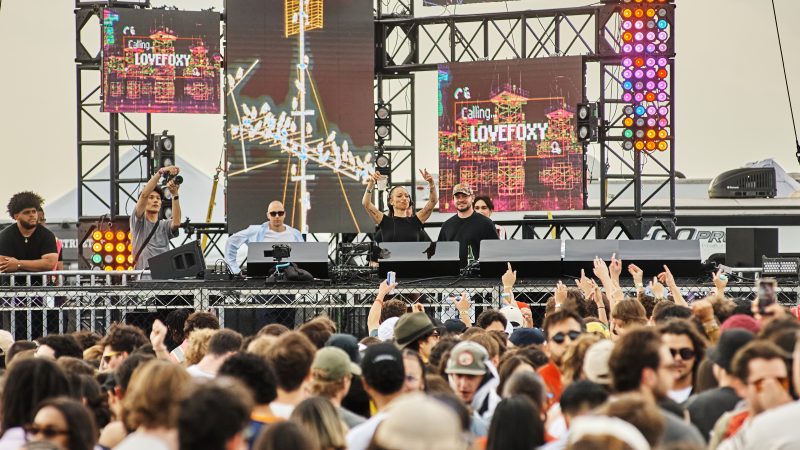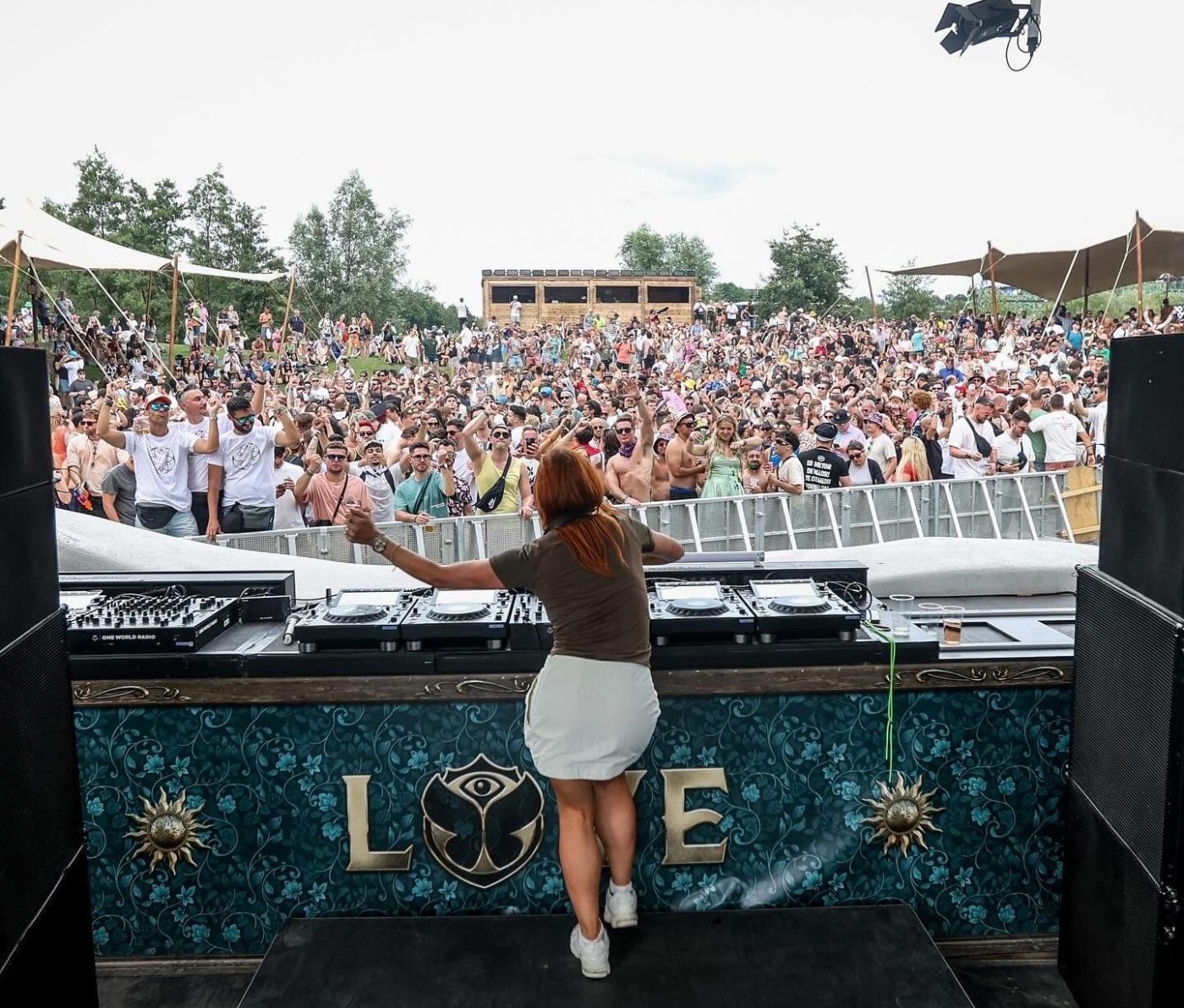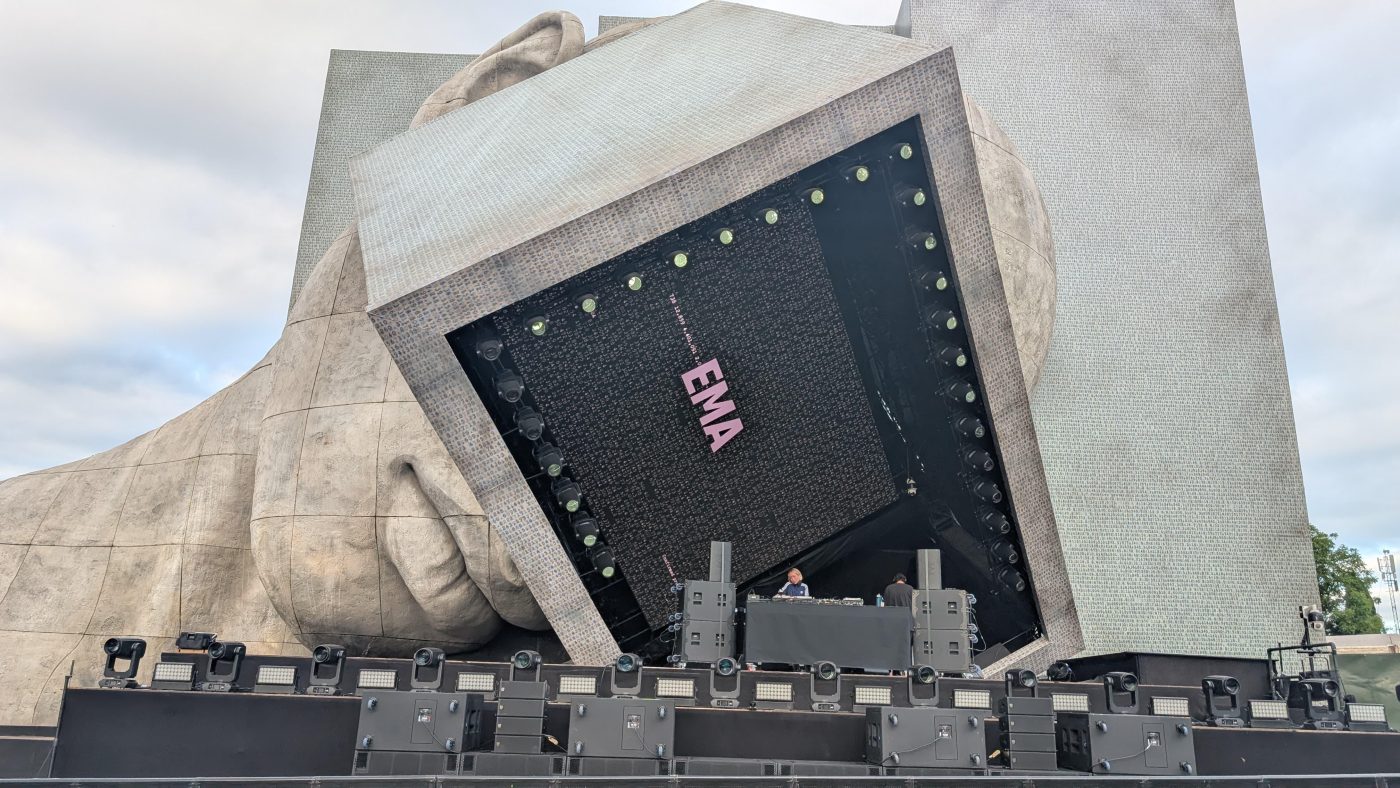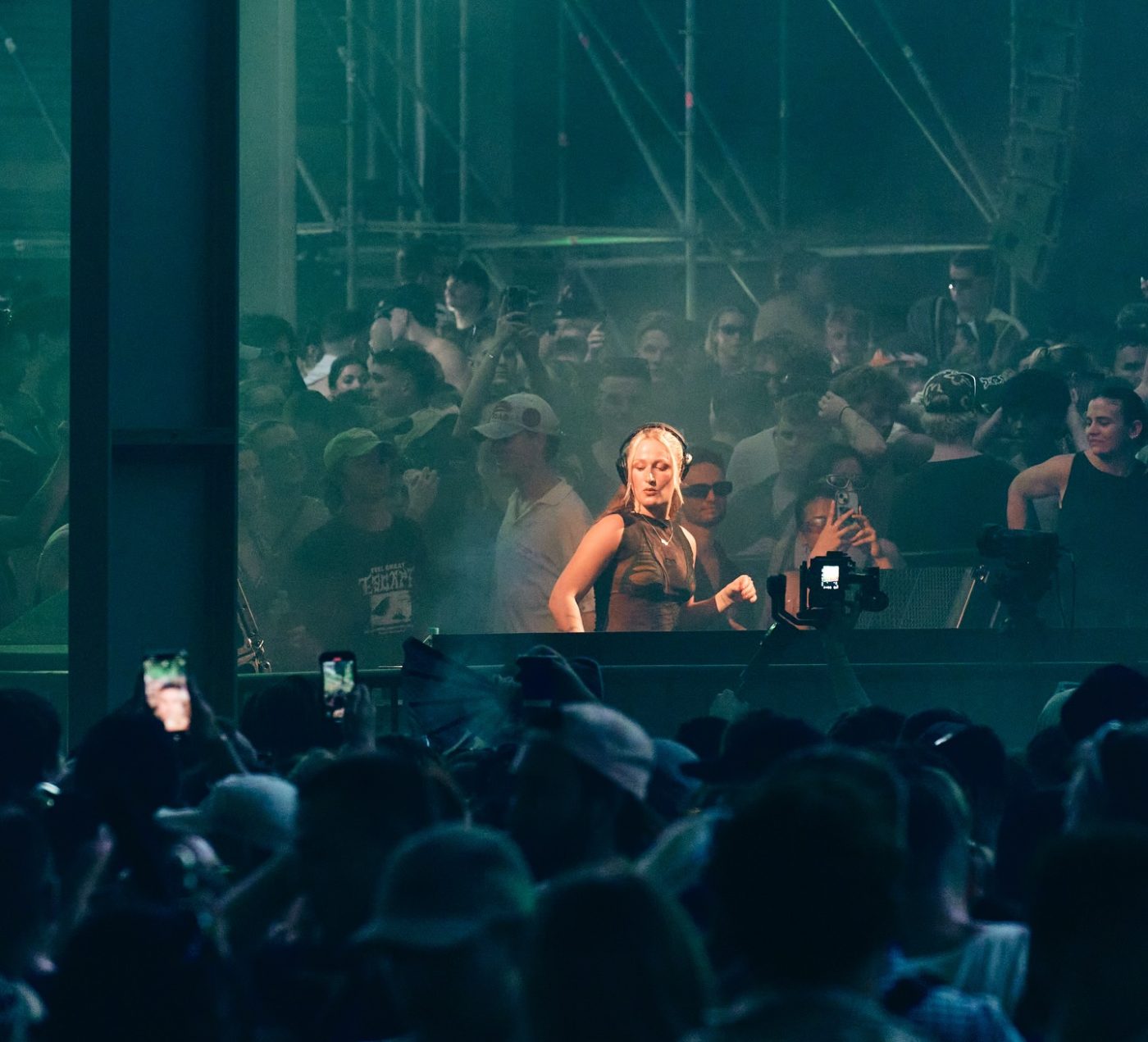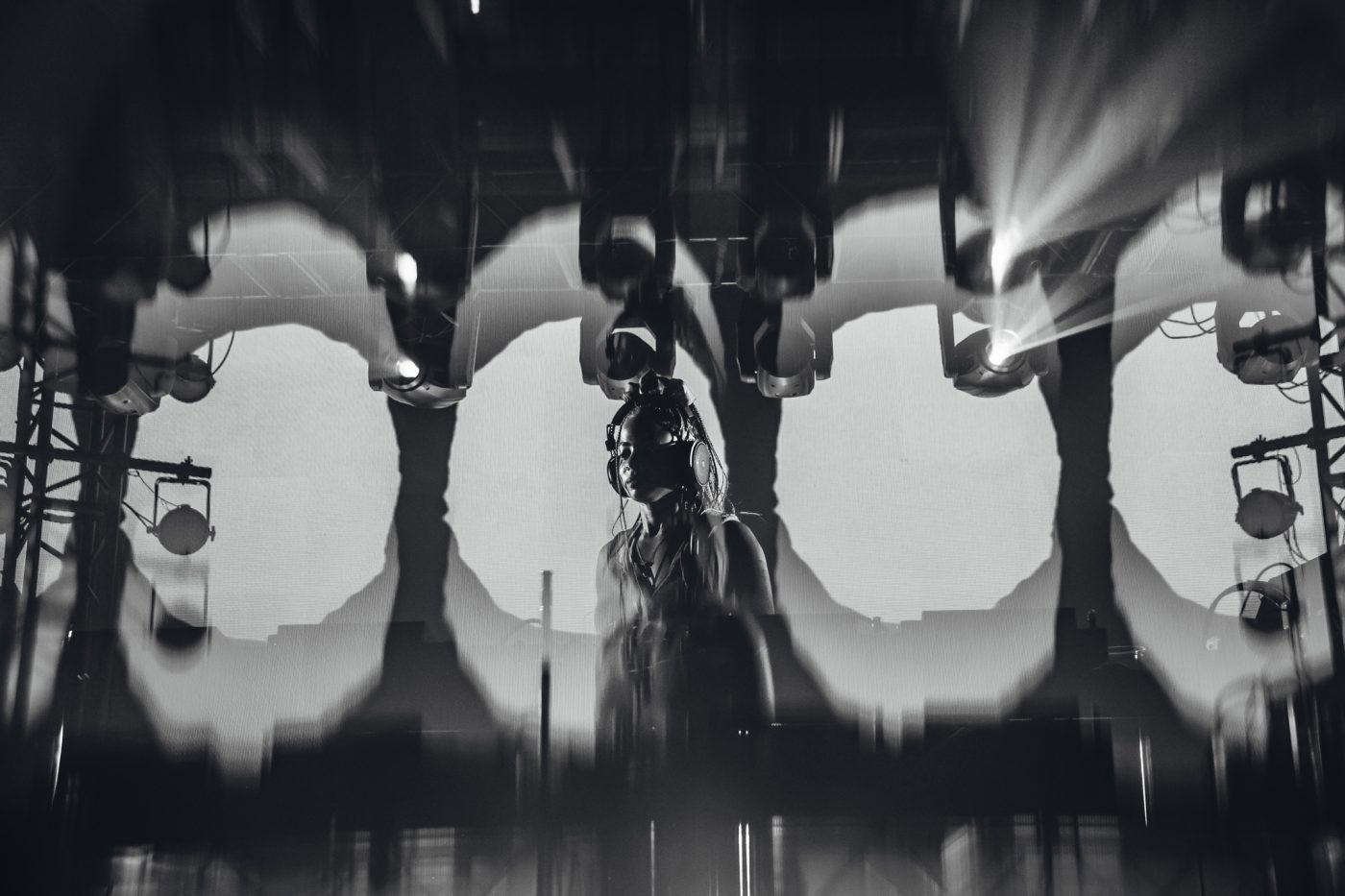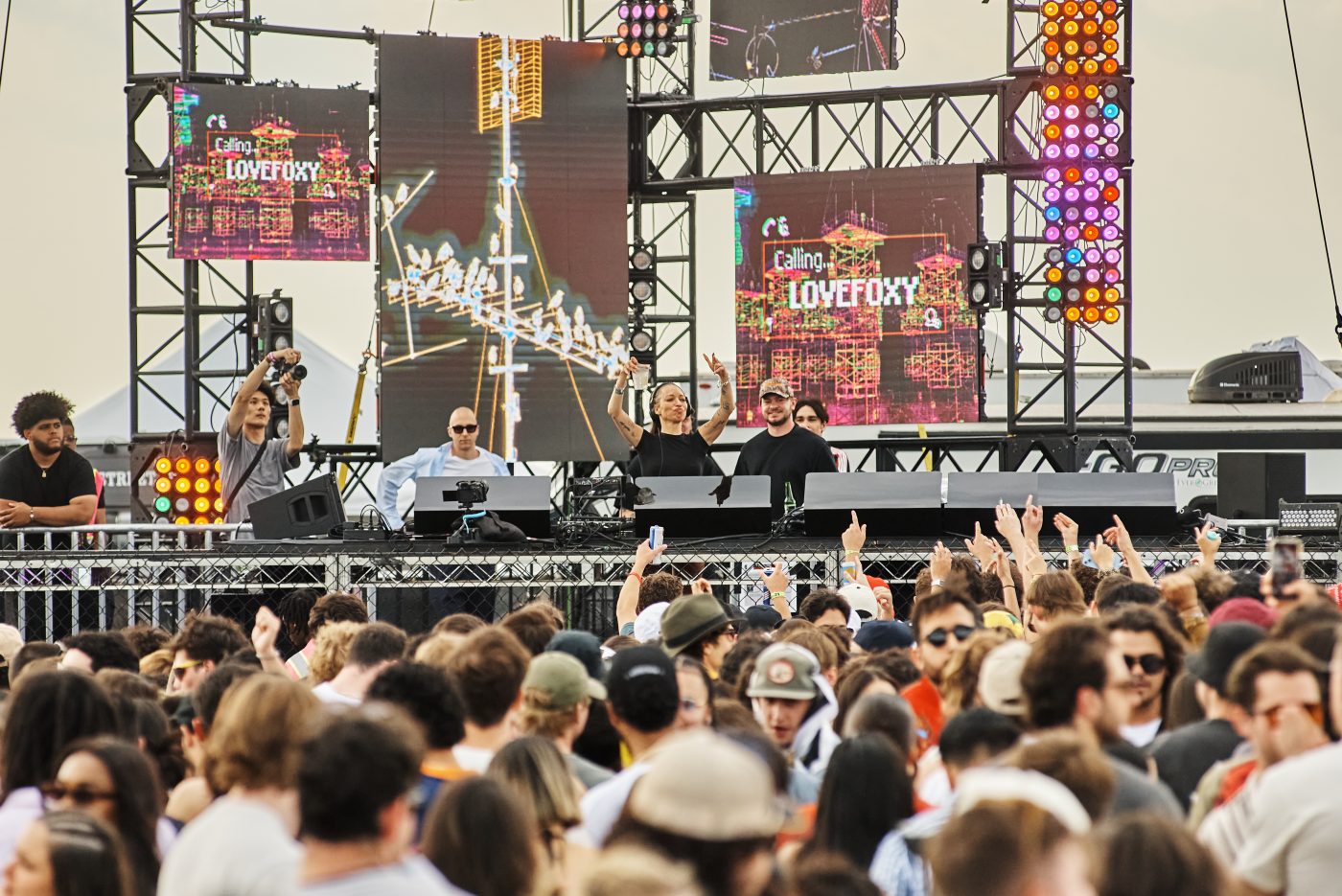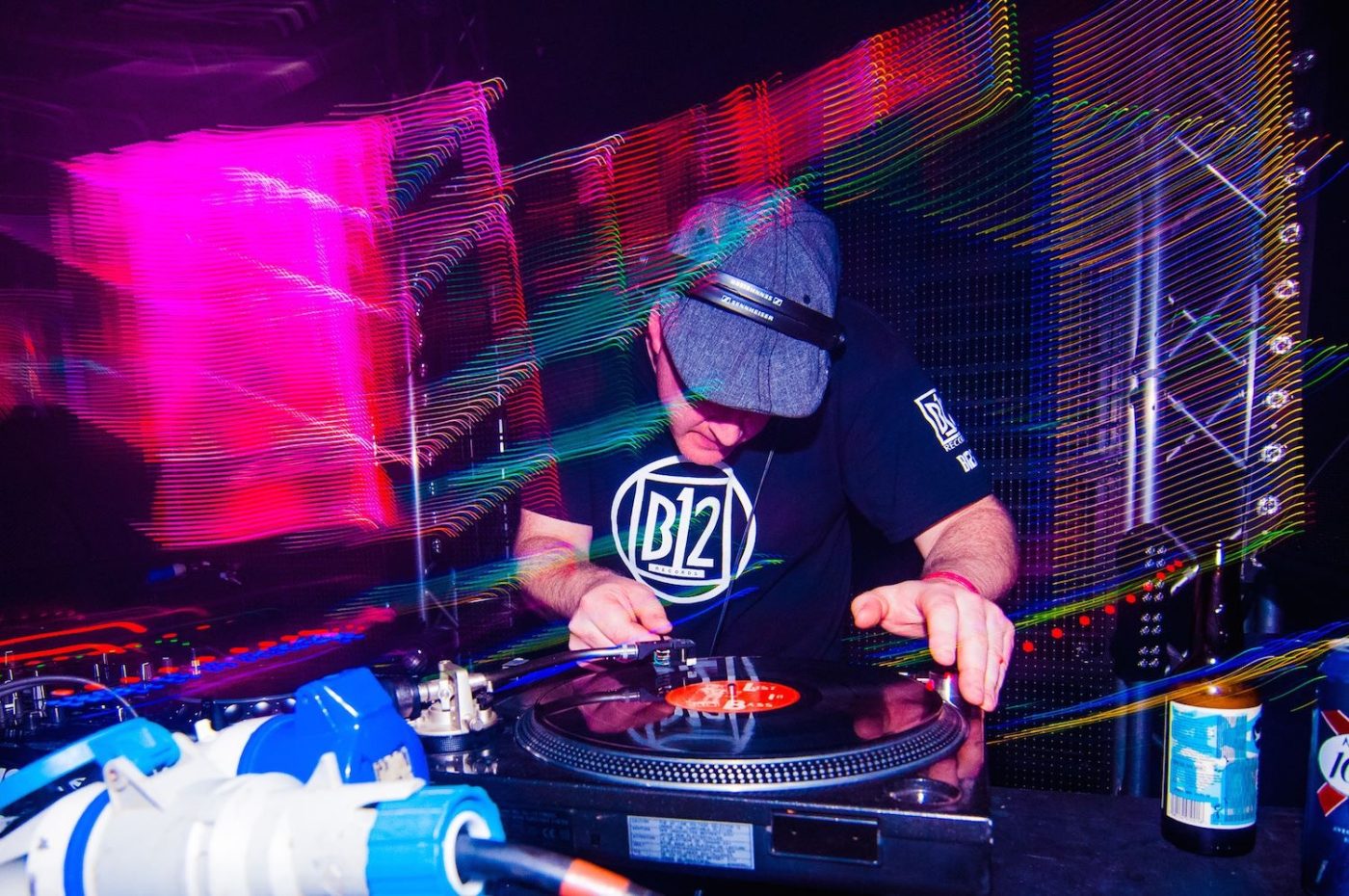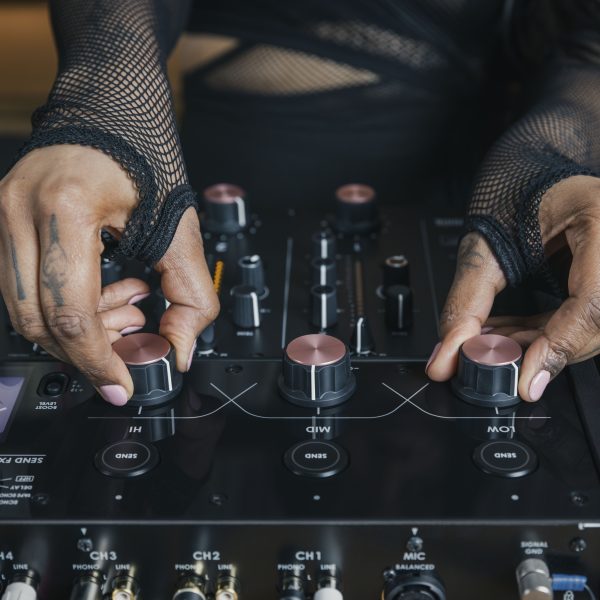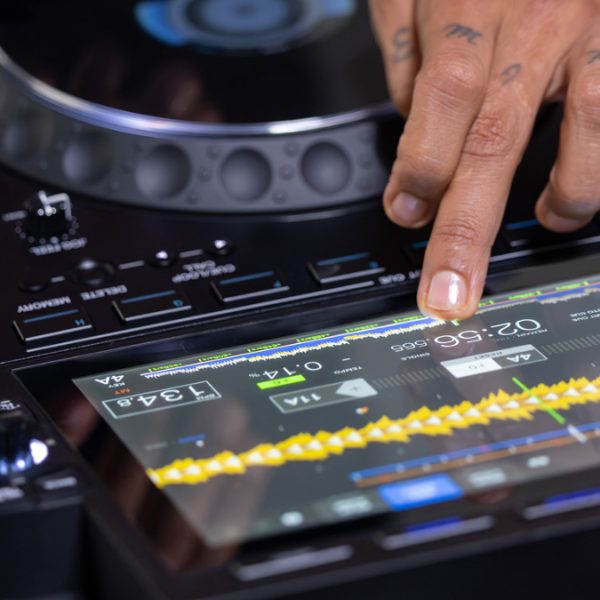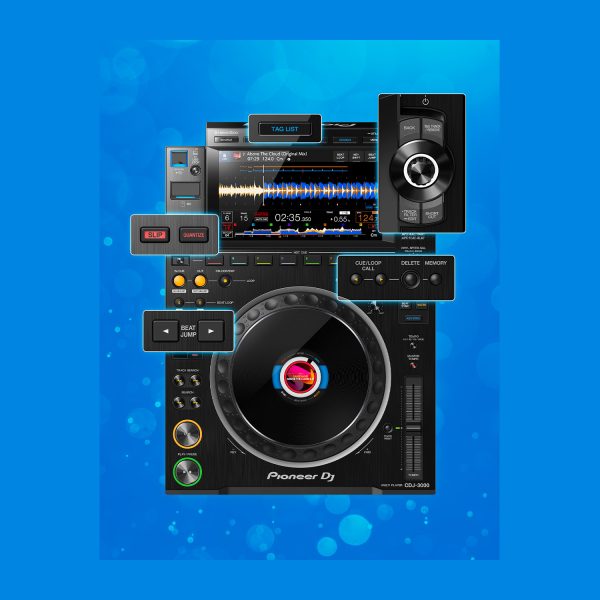Set time
On the topic of set time, Tash said that if she’s booked to play a daytime party, she’ll tend to “go harder” because the crowd are there for that day alone, and will want to get as much out of the occasion as possible. “Whereas if I’ve got a daytime set at a festival that lasts multiple days, I might take it a bit slower.”
IMOGEN finds that daytime sets are always more “euphoric” because “the vibe is a lot easier and happier than a club set,” she said. “When it’s a festival, it can be a bit more exciting, because usually either my friends have come with me, or I’ve had a full night’s sleep.”
Another bonus of playing during the day is that the crowd’s faces and reactions are more visible than at a typical club, although IMOGEN admitted that this can make playing to a large crowd nerve-racking. “But when I get into it, I really enjoy it, especially at Neopop, that was my favourite festival set,” she said, describing her 9.30 AM closing slot at the Portuguese festival. “I think if you can see people’s faces, you can get a different kind of energy. And if I see them smiling it can really change what music I play.”
If EMA is playing in the daytime or and it’s not too busy on the dancefloor, she’ll “lean into tracks with a lot of space, usually, and then slowly try to get people moving,” she said. “I don’t think about BPMs, just energy when it comes to music.”
Sound engineers
No matter the industry, it’s normal to meet a grumpy or difficult colleague in the workplace. In club music, this could be the sound engineer tasked with running the technical sides of a festival stage. Some of these engineers come from live music backgrounds, which might explain some of the turbulence when they’re working with DJs. It’s almost a rite of passage for a DJ to meet at least one sound engineer with a prickly attitude. But it’s worth remembering that festival sound engineers have a demanding and difficult job, with plenty of stress stemming from the outdoor setting.
While LOVEFOXY didn’t want to “put anyone in a box”, she admitted that “attitudes can run high” because as a DJ you’re working with a myriad of people in the festival space, and there is very little time to “fix, introduce, or do something” if things don’t go to plan. “I do want to say that showing you how your requested mixer works is still a thing and is quite rude,” she said. “I am very familiar with my requested DJ gear—I believe that has something to do with how female-identifying DJs are still seen in the scene…”
Tash LC has had mostly positive experiences with sound engineers. When she was starting out, however, she was often assumed to be the DJ’s girlfriend, or not the DJ at all. “But not so much now, since there are way more women DJing,” she said. While it’s inevitable to meet “some grumps”, she feels she’s good at cracking them. She understands the extensive hours they work and the chaotic environments that come with the job.
“I always tend to give [the sound engineer] a hug at the end as well,” Tash said, “because that always breaks anyone, even if they’re a bit stiff in the hug, it’s kind of like, ‘Thank you, I appreciate you’ because I guess they’re doing all the work, and they can often be quite underthanked and underappreciated. So I just try to make sure that they know that I’m grateful.”
“I usually find them a nice bunch,” Jerome said. “I think generally if you’re nice to people then they’re nice back to you. You said that sound engineers often have an attitude towards the DJs, but I’m thinking maybe it’s the other way around… I can imagine some DJs getting annoyed by being turned down when redlining the mixer with their 128k YouTube rips. Maybe it’s a conspiracy to make their amazing tunes sound weak and embarrass them in front of their adoring fans!” he joked.

